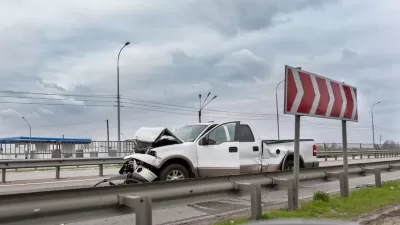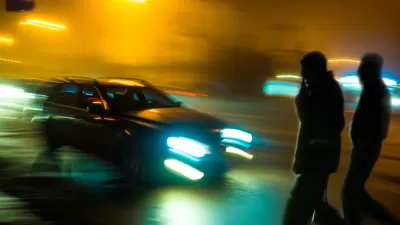New cars will be required to include automatic detection and braking technology for vehicles and pedestrians by 2029.

The U.S. Department of Transportation’s National Highway Traffic Safety Administration (NHTSA) issued its final update to federal regulations that govern vehicle design, mandating new features to protect pedestrians and prevent crashes. The new Federal Motor Vehicle Safety Standard calls for automatic emergency braking (AEB) technology for vehicles and pedestrians on all passenger cars and light trucks by 2029.
According to a press release from the NHTSA, “The new standard requires all cars be able to stop and avoid contact with a vehicle in front of them up to 62 miles per hour and that the systems must detect pedestrians in both daylight and darkness. In addition, the standard requires that the system apply the brakes automatically up to 90 mph when a collision with a lead vehicle is imminent, and up to 45 mph when a pedestrian is detected.” The technology is designed to detect pedestrians and vehicles during daylight and darker conditions.
The agency estimates this could save over 360 lives each year, based on fatality statistics. The standard fulfills a provision in the Bipartisan Infrastructure Law and advances the National Roadway Safety Strategy, a federal effort to reduce traffic fatalities and injuries.
FULL STORY: NHTSA Finalizes Key Safety Rule to Reduce Crashes and Save Lives

Alabama: Trump Terminates Settlements for Black Communities Harmed By Raw Sewage
Trump deemed the landmark civil rights agreement “illegal DEI and environmental justice policy.”

Planetizen Federal Action Tracker
A weekly monitor of how Trump’s orders and actions are impacting planners and planning in America.

Why Should We Subsidize Public Transportation?
Many public transit agencies face financial stress due to rising costs, declining fare revenue, and declining subsidies. Transit advocates must provide a strong business case for increasing public transit funding.

Understanding Road Diets
An explainer from Momentum highlights the advantages of reducing vehicle lanes in favor of more bike, transit, and pedestrian infrastructure.

New California Law Regulates Warehouse Pollution
A new law tightens building and emissions regulations for large distribution warehouses to mitigate air pollution and traffic in surrounding communities.

Phoenix Announces Opening Date for Light Rail Extension
The South Central extension will connect South Phoenix to downtown and other major hubs starting on June 7.
Urban Design for Planners 1: Software Tools
This six-course series explores essential urban design concepts using open source software and equips planners with the tools they need to participate fully in the urban design process.
Planning for Universal Design
Learn the tools for implementing Universal Design in planning regulations.
Caltrans
Smith Gee Studio
Institute for Housing and Urban Development Studies (IHS)
City of Grandview
Harvard GSD Executive Education
Toledo-Lucas County Plan Commissions
Salt Lake City
NYU Wagner Graduate School of Public Service





























